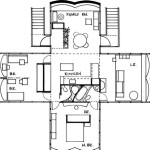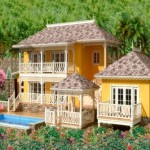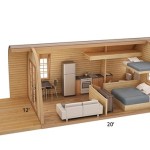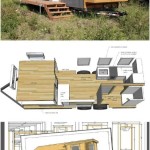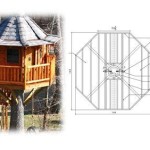Essential Aspects of 1950s Ranch House Floor Plans
The 1950s witnessed a surge in the popularity of ranch-style homes. These charming single-story dwellings have become iconic symbols of suburban living, characterized by their spacious floor plans, open layouts, and functional designs.
In this article, we will delve into the essential aspects of 1950s ranch house floor plans, exploring their unique features, advantages, and enduring appeal.
1. Open Floor Plans
One of the defining characteristics of 1950s ranch houses is their open floor plans. The living room, dining room, and kitchen often flow seamlessly into one another, creating a spacious and inviting atmosphere.
This open layout fostered a sense of family togetherness and made it easy for homeowners to entertain guests. It also allowed for better natural light penetration, making the home feel brighter and more welcoming.
2. Single-Level Living
As their name suggests, ranch houses are typically single-story dwellings. This design feature made them highly accessible for families with young children or elderly members.
The absence of stairs also eliminated the need for separate living quarters on different floors, promoting a more cohesive and connected family environment.
3. Simple Exteriors
1950s ranch houses are known for their simple and unpretentious exteriors. They typically feature clean lines, low-pitched roofs, and modest elevations.
This aesthetic simplicity aligns with the post-war desire for functionality and affordability. It also allowed homeowners to personalize their homes through landscaping and exterior paint colors.
4. Large Windows
Ranch houses of the 1950s often incorporated large windows, particularly in the living room and bedrooms. These expansive windows allowed for ample natural light, creating a bright and airy ambiance.
The windows also provided panoramic views of the outdoors, offering a seamless connection between the interior and exterior spaces.
5. Attached Garages
Attached garages became a standard feature in 1950s ranch houses. This convenient feature provided direct access to the home from the vehicle, making it easier to transport groceries or passengers.
The garage also doubled as a versatile space, often serving as a workshop, storage area, or additional playroom for children.
6. Functional Kitchens
Kitchens in 1950s ranch houses were designed with functionality in mind. They typically featured ample counter space, built-in appliances, and efficient storage solutions.
The kitchen was often located at the heart of the home, serving as a gathering place for family meals and casual conversations.
7. Modest Square Footage
1950s ranch houses were typically modest in size, ranging from 1,000 to 1,500 square feet. This manageable scale made them affordable for middle-class families and easy to maintain.
The smaller size also promoted a cozy and intimate atmosphere, encouraging family bonding and creating a sense of home.
Conclusion
1950s ranch house floor plans revolutionized residential design, creating comfortable, functional, and aesthetically pleasing homes. Their open layouts, single-level living, simple exteriors, large windows, and modest square footage continue to inspire architects and homeowners alike.
Today, ranch houses remain popular choices for families seeking a charming and timeless living experience that epitomizes the suburban dream.

The Best 50s Ranch House Design So Far A Retro Renovation Re Run

1956 Modern Ranch Style House Plans Exterior Vintage

1950s Ranch Homes Google Search House Plans Style Vintage

Ranch Style Home Wiki Fandom

Vintage Real Estate Choose Your House From A 1958 Modern Living Homes Catalog The Inn

1950s Ranch House Plan Remodel Vintage Plans

Back At The Ranch City Observatory

Mid Century Exterior Paint Ranch Style House Plans Vintage

Vintage Real Estate Choose Your House From A 1958 Modern Living Homes Catalog The Inn

49 American 1955 Home Plans House Designs With Floor 50

